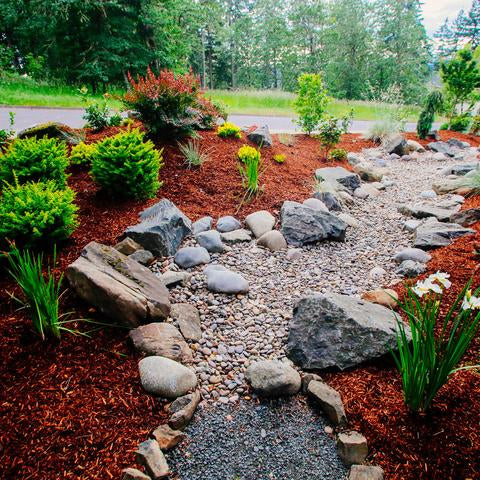Mulch & Ground Covers: Essential Elements for a Thriving Garden
When it comes to preserving a wholesome and aesthetically attractive garden, mulch and ground covers are two of the maximum valuable gear in any gardener’s toolkit. These materials no longer only enhance the appearance of your garden but also play a crucial function in improving plant fitness, holding moisture, and controlling weeds. In this text, we’re going to explore the different varieties of mulch and ground covers, their benefits, and the way they can remodel your garden into a colourful and thriving outdoor area.
What is Mulch?
Mulch refers to a layer of material carried out to the surface of the soil around plant life. Its number one reason is to protect the soil and plants through regulating temperature, maintaining moisture, and lowering weed increase. Mulch may be made from a variety of organic and inorganic materials, each providing unique benefits to gardeners.
Types of Mulch
Organic Mulch
Organic mulches are made from natural materials that break down over time, enriching the soil as they decompose. Common types include:
- Wood Chips A famous desire for flower beds and vegetable gardens, wooden chips help keep moisture and provide a rustic, herbal look.
- Bark Mulch Made from the bark of bushes, this mulch is thought for its long-lasting sturdiness and attractive appearance.
- Straw or Hay Ideal for vegetable gardens, straw provides a mild, airy cover that prevents soil erosion and continues weeds at bay.
- Grass Clippings Freshly mowed grass clippings are a terrific alternative for adding nitrogen to the soil, however they have to be used sparingly to prevent matting.
Inorganic Mulch
Inorganic mulches do not break down or decompose like organic mulches. While they don’t enrich the soil, they are effective at controlling weeds and maintaining moisture. Common inorganic mulches include:
- Gravel or Pebbles Great for pathways or ornamental regions, gravel permits for top water drainage even as offering a current, smooth appearance.
- Rubber Mulch Made from recycled tires, rubber mulch is durable, long-lasting, and powerful at suppressing weeds.
- Landscape Fabric A woven, breathable material that facilitates save you weed increase while allowing air and water to skip via to the soil beneath.
What are Ground Covers?
Ground cover is low-growing plants or materials that cover the soil surface, prevent weeds, and improve soil texture. They are a useful alternative to traditional grass and can help in areas where grass grows difficult.
Types of Ground Covers
Creeping Plants Creeping or spreading vegetation are first rate for masking huge regions fast. Common floor cover plants encompass:
Creeping Thyme This aromatic herb is best for sunny spots and offers a cute perfume whilst walked on.
Clover Known for its low preservation and nitrogen-solving competencies, clover is a first rate green ground cover.
Creeping Jenny A speedy-developing plant with colourful green or yellow foliage that may tolerate a whole lot of soil conditions.
Ground Cover Mats For an immediately, low-protection solution, floor cover mats are to be had in quite a few materials. They are frequently used in areas where instant insurance is wanted, inclusive of underneath timber or along pathways.
Benefits of Ground Covers
Weed Prevention
Ground covers, like mulch, suppress weed growth by means of blockading sunlight and preventing weed seeds from germinating. Once set up, these vegetation form a dense mat that maintains weeds from overtaking the lawn.
Aesthetic Appeal
Ground covers upload visible interest and texture on your garden. Whether you’re the usage of them as a dwelling carpet or to fill in spaces among other flowers, they beautify the overall look of your landscape.
Erosion Control
In areas with slopes or bad drainage, floor covers can assist save you soil erosion. Their dense root structures preserve the soil in vicinity, lowering runoff and promoting balance.
Low Maintenance
Many floor covers are low-upkeep and require little care once installed. They thrive in diverse soil conditions and often need much less watering than conventional lawn grass, making them perfect for eco-aware gardeners.
